Field-Tested Weight & Warmth Comparisons Including Premium Down Bags, Budget Options & True Backpacking Quilts
TESTED Updated October 2025
After testing dozens of ultralight sleeping bags and quilts available on Amazon, we’ve identified the choice gear that delivers genuine weight savings without sacrificing warmth for Michigan backcountry adventures and squatchin.
This OTL comparison guide cuts through the marketing claims to show you the actual differences between premium down bags, budget alternatives, and true backpacking quilts—all available with Prime shipping.
The ultralight sleeping bag versus quilt debate continues, but the right choice depends on your sleep style, temperature needs, and whether you prioritize packability or draft-free warmth.
🎯 Our Top Picks at a Glance
- Best Premium Ultralight Bag: Therm-a-Rest Hyperion 32°F (16oz)
- Best Overall Value Bag: Sea to Summit Spark 30°F
- Best Budget Down Bag: Naturehike Ultralight 42°F
- Best True Backpacking Quilt: 850 Down Top Quilt
- Best Budget Quilt Alternative: Get Out Gear Down Blanket
- Best Mid-Range Option: Kelty Cosmic 20
⚖️ Hiking Quilt vs Sleeping Bag: The Core Differences
Why Ultralight Backpackers Choose Hiking Quilts
Backpacking quilts eliminate the compressed insulation underneath your body since your sleeping pad provides ground insulation, cutting 4-11 ounces compared to equivalent sleeping bags.
The lack of bottom insulation, hood, and full-length zipper reduces both weight and packed size—critical advantages for thru-hikers counting every ounce across thousand-mile trails.
Lightweight hiking quilts excel in temperatures down to about 20-25°F before drafts become problematic, making them ideal for three-season backpacking rather than winter expeditions.
- Weight Savings: Typical 20°F quilt weighs 17-22oz versus 24-28oz for equivalent sleeping bag
- Versatility: Quilts with zippered footboxes open completely flat for hot summer nights
- Freedom of Movement: Side sleepers and restless movers avoid mummy bag constriction
- Pack Size: Eliminating hood and bottom material creates 20-30% smaller compressed volume
When Traditional Ultralight Sleeping Bags Win
Best ultralight sleeping bags provide draft-free warmth through complete enclosure—critical for temperatures below 20°F, high-wind conditions, or cowboy camping without tent protection.
Back sleepers who don’t move much at night often prefer sleeping bags’ secure, cocoon-like feel versus quilts’ pad attachment systems that require proper setup.
- Draft Protection: Zippered closure and integrated hood eliminate cold spots from gaps
- Simplicity: No pad straps to adjust—just climb in and zip up
- Cold Weather: Better performance below 20°F when drafts sap quilt warmth
- Weather Protection: Hoods provide head insulation during exposed bivouac camping
📊 Complete Comparison: All 7 Options
| Product | Type | Weight | Temp Rating | Fill Power | Rating | Best For |
|---|---|---|---|---|---|---|
| Therm-a-Rest Hyperion 32°F | Sleeping Bag | 16oz | 32°F | 900-fill | 4.5/5 ⭐ | Premium Ultralight |
| Sea to Summit Spark 30°F | Sleeping Bag | 1.1 lbs | 30°F | 850+ fill | 4.4/5 ⭐ | Best Overall Value |
| Kelty Cosmic 20 | Sleeping Bag | 2 lbs 5oz | 20°F | 550-fill | 4.6/5 ⭐ | Mid-Range Quality |
| Naturehike Ultralight 42°F | Sleeping Bag | 20oz | 42°F | 650-fill | 4.4/5 ⭐ | Budget Down |
| ZOOOBELIVES 32-50°F | Sleeping Bag | 27oz | 32-50°F | 650-fill | 4.1/5 ⭐ | Budget Versatile |
| 850 Down Top Quilt | Quilt | 18oz | 20°F | 850-fill | 4.5/5 ⭐ | True Backpacking Quilt |
| Get Out Gear Down Blanket | Quilt/Blanket | 22oz | 50°F | 650-fill | 4.5/5 ⭐ | Budget Quilt Option |
🏆 Detailed Ultralight Sleeping Bag Reviews
Therm-a-Rest Hyperion 32°F Ultralight Down Sleeping Bag
Best Premium Ultralight Sleeping Bag on Amazon
✅ Pros
- Incredible 16oz weight for 32°F rating
- Premium 900-fill Nikwax hydrophobic down
- Box baffle construction eliminates cold spots
- Packs down to 5.5 x 6 inches
- SynergyLink pad connectors
❌ Cons
- Premium pricing
- Thin 10D fabric requires careful handling
- Snug mummy fit not ideal for side sleepers
- 32°F rating limits shoulder season use
The Therm-a-Rest Hyperion 32°F represents the pinnacle of ultralight sleeping bag engineering available on Amazon, delivering sub-1-pound weight that serious gram-counters demand.
At just 16 ounces, this bag achieves weight levels typically reserved for cottage industry brands while maintaining legitimate warmth through premium 900-fill power hydrophobic down.
Box baffle construction prevents down migration and cold spots that plague cheaper ultralight bags using sewn-through baffles in critical torso areas.
During our Nordhouse Dunes testing, the Hyperion’s pad connectors proved invaluable when 25mph winds threatened to slide us off our pads overnight—we stayed perfectly positioned despite the conditions.
Zoned insulation places 70% of down fill on top and sides where compression doesn’t reduce loft, relying on your sleeping pad’s R-value for ground insulation.
The ThermaCapture lining reflects radiant body heat back toward your core without adding measurable weight—a feature found only in premium ultralight bags.
SynergyLink Connectors attach the bag to compatible Therm-a-Rest sleeping pads, preventing the common problem of sliding off your pad during restless nights.
Responsible Down Standard certification ensures ethical sourcing—important for environmentally conscious backpackers who care about supply chain practices.
The ergonomic shape and longer zipper (compared to cheaper ultralight bags) provide better temperature regulation and easier entry/exit than restrictive designs.
Available in three sizes: Small (15oz, fits up to 5’6″), Regular (16oz, fits up to 6′), and Long (18oz, fits up to 6’6″)—proper fit prevents excess dead air space that wastes warmth.
Compression stuff sack and storage sack included—critical for maintaining down loft during long-term storage between backpacking seasons.
Check Latest Availability on Amazon
Sea to Summit Spark 30°F Ultralight Down Sleeping Bag
Best Overall Value Ultralight Sleeping Bag
✅ Pros
- High-loft 850+ fill power down
- Ultra-Dry down treatment resists moisture
- Hybrid box baffle design optimizes warmth-to-weight
- YKK #5 zipper prevents snags
- Lifetime warranty from Sea to Summit
❌ Cons
- Heavier than Hyperion at 1.1 lbs
- Premium pricing
- Mummy taper may feel restrictive
- 30°F rating requires pad R-value 4+
The Sea to Summit Spark 30°F balances premium performance with slightly more accessible pricing than the Hyperion, making it our top value pick for serious backpackers.
At 1.1 pounds, this bag weighs more than the Hyperion but delivers 2 degrees lower temperature rating—better suited for shoulder season camping when nights drop below freezing.
Ultra-Dry down treatment (non-PFC formula) improves moisture resistance by 400% compared to untreated down, maintaining loft in humid Pacific Northwest or Appalachian conditions.
Hybrid baffle construction uses box baffles in the torso where warmth matters most, transitioning to lighter sewn-through baffles in the leg area to reduce weight.
The 10D nylon shell with PFC-free DWR finish offers better durability than the Hyperion’s delicate fabric while still packing impressively small.
Contoured mummy shape offers more shoulder room than ultra-restrictive designs, accommodating back sleepers who shift positions occasionally during night.
YKK #5 zipper provides smoother operation than cheaper #3 zippers found on budget bags, with zipper plow preventing fabric snags that damage thin shells.
Responsible Down Standard certification guarantees ethical sourcing from suppliers meeting animal welfare requirements—Sea to Summit leads the industry in supply chain transparency.
Available in Regular (up to 6′ tall) and Long (up to 6’6″) sizes, plus multiple temperature ratings from 45°F down to 0°F for various season use.
Ultra-Sil compression sack compresses the bag to minimal volume, though proper loft recovery requires storage in the included mesh bag between trips.
Check Latest Availability on Amazon
Kelty Cosmic 20 Down Sleeping Bag
Best Mid-Range Ultralight Option
✅ Pros
- Excellent mid-range pricing
- Warmer 20°F rating for shoulder seasons
- Recycled fabrics with PFAS-free DWR
- More durable than ultra-thin premium bags
- 149 verified Amazon reviews (4.6 stars)
❌ Cons
- Heavier at 2 lbs 5oz
- Lower 550-fill power down
- Larger packed size than premium options
- Not true ultralight category
The Kelty Cosmic 20 bridges the gap between budget sleeping bags and premium ultralight options, delivering legitimate 20°F warmth at mid-range pricing.
While 2 pounds 5 ounces exceeds true ultralight territory, this weight remains reasonable for weekend backpackers who prioritize warmth and durability over gram-counting.
The 550-fill power down requires more material to achieve 20°F rating compared to 850+ fill bags, but offers better value per dollar spent.
Recycled fabrics and PFAS-free DWR treatment appeal to environmentally conscious backpackers seeking sustainable gear without cottage industry pricing.
More robust construction withstands rough handling better than delicate 10D ultralight fabrics—ideal for beginners learning proper gear care.
Designed in Colorado by backpackers who understand Rocky Mountain conditions where temperature swings demand reliable insulation performance.
The mummy shape provides better draft protection than quilts while costing significantly less than premium ultralight mummy bags.
Strong Amazon rating (4.6 stars from 149 reviews) indicates consistent quality and customer satisfaction across multiple seasons of use.
Check Latest Availability on Amazon
Naturehike Ultralight Down Sleeping Bag 42°F
Best Budget Ultralight Down Bag
✅ Pros
- Budget-friendly pricing
- Legitimate 650-fill RDS certified down
- Ultralight 20oz weight
- Waterproof compression sack included
- 199 verified reviews (4.4 stars)
❌ Cons
- Only rated to 42°F limits cold weather use
- Lower fill power than premium bags
- May run small for taller users
- Shell fabric less durable than premium options
The Naturehike Ultralight 42°F delivers genuine down insulation and ultralight weight at budget pricing that undercuts premium bags by hundreds of dollars.
At 20 ounces, this bag weighs only 4 ounces more than bags costing five times as much—exceptional value for summer backpackers.
The 650-fill power down meets RDS certification standards, ensuring ethical sourcing despite the aggressive pricing.
The 42°F temperature rating suits summer backpacking from June through August when overnight lows stay above 50°F in most lower-48 mountain ranges.
Waterproof compression sack protects down insulation during wet conditions—a feature often excluded from budget bags that forces separate purchases.
Compact storage enables use in smaller backpacks without sacrificing space needed for food and safety equipment on multi-day trips.
Strong 4.4-star rating from 199 Amazon reviews indicates consistent quality control from Naturehike’s manufacturing despite budget positioning.
Ideal for beginners testing ultralight backpacking before investing in premium cottage industry gear costing significantly more.
Check Latest Availability on Amazon
ZOOOBELIVES Ultralight 32-50°F Sleeping Bag
Best Budget Versatile Option
✅ Pros
- Affordable price point
- Versatile 32-50°F temperature range
- 650-fill down at budget pricing
- Recycled materials construction
- 860 reviews provide confidence
❌ Cons
- 27oz weight heavier than competitors
- Wide temperature range indicates compromise
- Lower 4.1-star rating suggests quality variation
- Envelope shape less thermally efficient
ZOOOBELIVES targets budget-conscious backpackers needing versatile performance across varying conditions rather than specialized ultralight minimalism.
The 32-50°F temperature range indicates envelope-style design that opens flat for warm nights and closes for cooler conditions—versatility over optimization.
At 27 ounces, this bag weighs nearly double the Therm-a-Rest Hyperion, but costs just a fraction as much—acceptable trade-off for occasional backpackers.
Recycled materials appeal to environmentally focused buyers seeking sustainable options at accessible price points below premium eco-brands.
The 860 customer reviews (4.1 stars) suggest quality consistency issues compared to higher-rated options, though most buyers report satisfactory performance.
Best suited for car camping with occasional short backpacking trips where weight matters less than cost savings and multi-season versatility.
Check Latest Availability on Amazon
850 Down Ultralight Sleeping Bag Top Quilt
Best True Ultralight Hiking Quilt on Amazon
✅ Pros
- True backpacking quilt design
- Premium 850-fill power down
- Ultralight weight saves ounces
- Pad attachment straps included
- Competitive pricing for premium fill
❌ Cons
- Only 80 reviews limits confidence
- Generic branding lacks reputation
- No detailed temperature rating
- Requires proper quilt setup knowledge
This 850-fill down hiking quilt represents the only legitimate backpacking quilt design available on Amazon versus camping blankets marketed as quilts.
Premium 850-fill power down delivers warmth-to-weight ratio comparable to cottage industry brands like Enlightened Equipment and Katabatic Gear.
True top quilt construction eliminates bottom insulation, relying on your sleeping pad’s R-value for ground warmth—proper ultralight design philosophy.
Included pad attachment straps prevent drafts by securing quilt edges to your sleeping pad, though proper adjustment requires practice and experience.
The pricing undercuts cottage industry quilts significantly while delivering similar fill power specifications and ultralight weight.
Limited 80 reviews (4.5 stars) suggest newer product with less market testing compared to established sleeping bag brands.
Generic branding lacks the customer service infrastructure and warranty support found with Sea to Summit or Therm-a-Rest purchases.
Best for experienced backpackers familiar with quilt systems who want Amazon convenience without cottage industry wait times.
Check Latest Availability on Amazon
Get Out Gear Down Camping Blanket
Best Budget Down Hiking Quilt Alternative
✅ Pros
- Excellent value pricing
- 650-fill power down insulation
- Water-resistant shell fabric
- Massive 3,400+ reviews (4.5 stars)
- Versatile multi-use design
❌ Cons
- Not true backpacking quilt design
- No pad attachment system
- Heavier than specialized quilts
- Better for car camping than backpacking
Get Out Gear’s down camping blanket provides quilt-style versatility at budget pricing, though it lacks specialized backpacking quilt features like pad attachments.
The 650-fill power down delivers legitimate warmth for mild weather camping when draped over sleeping bags or used alone on summer nights.
Water-resistant shell fabric protects down from moisture better than standard camping blankets, though it doesn’t match technical sleeping bag DWR treatments.
Packable design compresses smaller than traditional blankets, making it feasible for car camping and short backpacking trips where weight isn’t critical.
The impressive 3,400+ reviews (4.5-star average) demonstrate consistent quality and customer satisfaction across diverse use cases beyond backpacking.
Versatile applications include stadium events, outdoor concerts, beach days, and supplemental camp warmth—better multi-use value than specialized quilts.
Multiple size options from throw to oversized accommodate different body sizes and sharing with partners during camping trips.
Small business product supports independent outdoor gear companies versus buying from corporate outdoor conglomerates.
Check Latest Availability on Amazon
🎯 Choosing Your Perfect Option: Decision Framework
Choose a Premium Ultralight Sleeping Bag If:
- You’re a serious gram-counter targeting sub-10-pound base weight for thru-hiking
- Draft-free warmth matters more than cost savings for your sleep comfort
- You sleep primarily on your back and don’t toss and turn excessively
- Cold weather camping below 30°F requires reliable insulation without drafts
- Premium down loft and packability justify the investment for frequent use
Choose an Ultralight Backpacking Quilt If:
- You’re a side sleeper who gets tangled and claustrophobic in mummy bags
- Temperatures stay above 25°F for your typical three-season backpacking window
- You understand quilt setup and have experience with pad attachment systems
- Maximum weight savings justifies learning curve and draft management
- You want versatility to use quilt open as blanket on warm summer nights
Choose Mid-Range or Budget Options If:
- You backpack 5-10 times annually rather than thru-hiking thousands of miles
- Durability and ease of use matter more than shaving every possible ounce
- Budget constraints limit spending for sleeping bags
- You’re new to ultralight backpacking and testing whether it suits your style
- Multi-use versatility for car camping plus backpacking provides better value
💡 Pro Tip: Sleeping Pad R-Value Matters More Than You Think
Your sleeping pad’s R-value determines 50% of your sleep system’s warmth. A 20°F quilt or bag paired with R-2 pad will leave you cold, while a 32°F bag with R-5 pad keeps you warm. Invest in proper insulation from below before upgrading to premium sleeping bags.
Minimum R-values by season: Summer (R-2 to R-3), Three-season (R-3 to R-4.5), Cold weather (R-4.5 to R-6), Winter (R-6+). Check our cold weather gear guide for complete winter sleep system recommendations.
📏 Understanding Ultralight Sleeping Bag Temperature Ratings
Temperature ratings on sleeping bags and quilts represent survival limits rather than comfort temperatures, creating confusion for buyers expecting warm sleep at rated temperatures.
The Truth About EN/ISO Temperature Ratings
EN (European Norm) and ISO testing standards provide objective temperature ratings, but they measure lower limit survival temperatures rather than comfortable sleep.
- Comfort Rating: Temperature at which average cold sleeper (typically women) will sleep comfortably
- Lower Limit Rating: Temperature at which average warm sleeper (typically men) can sleep without shivering—this number appears on most bags
- Extreme Rating: Survival temperature preventing hypothermia but not comfortable sleep
- Reality Check: Add 10-15°F to any temperature rating for actual comfortable sleeping temperature
Quilts Lack Standardized Testing
Most backpacking quilts don’t receive EN/ISO testing because they lack bottom insulation and hoods required for standardized test dummy procedures.
Cottage industry manufacturers use internal testing with conservative ratings, but buyers should expect quilts to perform 5-10°F warmer than equivalent sleeping bags due to potential drafts.
Purchase quilts rated 10-15°F lower than your expected low temperatures for comfortable sleep without cold spots from pad attachment gaps.
🔬 Ultralight Sleeping Bag 0 Degree vs 20 Degree Options
Choosing between an ultralight sleeping bag 0 degree rating versus 20 degree rating impacts both pack weight and versatility for different camping conditions.
Ultralight Sleeping Bag 20 Degree Benefits
An ultralight sleeping bag 20 degree rating provides the sweet spot for three-season backpacking across most North American climates from April through October.
- Weight Savings: 20-degree bags typically weigh 4-8 ounces less than 0-degree equivalents
- Pack Size: Smaller compressed volume leaves more pack space for food and safety gear
- Versatility: Adequate warmth for spring, summer, and fall camping in most regions
- Cost: Less down fill means lower pricing compared to 0-degree options
Ultralight Sleeping Bag 0 Degree Advantages
An ultralight sleeping bag 0 degree rating extends your camping season into winter and provides insurance against unexpectedly cold nights in shoulder seasons.
- Four-Season Use: Handles winter camping and high-altitude mountaineering
- Safety Margin: Extra warmth protects against hypothermia when conditions turn severe
- One-Bag Solution: Eliminates need for multiple temperature-rated bags
- Ventilation: Can be opened up for warmer nights, though less ideal than dedicated summer bag
The Sea to Summit Spark line offers both 0-degree and 15-degree options for backpackers needing cold weather performance without excessive weight penalties.
Frequently Asked Questions About Ultralight Sleeping Bags & Quilts
What’s the lightest sleeping bag I can buy on Amazon?
The Therm-a-Rest Hyperion 32°F at 16 ounces (1 pound) is the lightest complete sleeping bag available on Amazon with legitimate temperature rating and premium construction. This weight rivals cottage industry ultralight bags costing similar amounts but lacks the 3-6 week custom order wait times. For comparison, the Sea to Summit Spark weighs 1.1 pounds at 30°F rating, still impressively light for its warmer temperature spec.
Are hiking quilts actually warmer than sleeping bags at the same weight?
No, quilts sacrifice some warmth for weight savings by eliminating bottom insulation and hoods. A 20°F quilt and 20°F sleeping bag use similar total down fill, but the sleeping bag distributes insulation all around your body while the quilt concentrates it on top and sides. Quilts work well above 25°F when paired with proper R-value sleeping pads, but sleeping bags provide better draft protection in colder temperatures or windy conditions.
Can I use a backpacking quilt in winter conditions?
Backpacking quilts work in winter only with proper gear combination and experience. You need a high R-value sleeping pad (R-6+), careful pad attachment to prevent drafts, insulated sleeping pad beneath your feet, and often a down hood or balaclava for head warmth. Most experienced winter campers prefer sleeping bags below 20°F because even small gaps in quilt attachment create cold spots that ruin sleep in sub-freezing temperatures.
How do I know what temperature rating I actually need for my ultralight sleeping bag?
Add 10-15°F to the coldest temperature you expect to encounter for comfortable sleep. If you camp when overnight lows drop to 35°F, choose a 20°F rated bag or quilt. Cold sleepers (women, older backpackers, thin individuals) should add an extra 10°F buffer. Your sleeping pad’s R-value dramatically affects warmth—use R-4 minimum for three-season camping and R-5+ for shoulder season trips below 30°F.
What’s the difference between 650, 850, and 900 fill power down?
Fill power measures down loft—how much space one ounce of down fills after compression. 900-fill power down expands to 900 cubic inches per ounce, requiring less weight to achieve warmth compared to 650-fill down. Premium bags use 850-900 fill power for maximum warmth-to-weight ratio, while budget bags use 550-650 fill power with more down weight to compensate. The difference matters most for ultralight backpackers counting ounces—a 900-fill 20°F bag weighs 4-6 ounces less than a 650-fill equivalent.
Will budget Amazon sleeping bags last as long as premium options?
Budget bags typically last 2-5 years with occasional use versus 10-15+ years for premium options like Therm-a-Rest or Sea to Summit. The thinner shell fabrics, lower-grade down, and cheaper baffling on budget bags lead to premature wear, down migration, and loft loss. For occasional backpackers taking 5-10 trips annually, budget bags provide acceptable longevity. Serious backpackers and thru-hikers gain better value from premium bags that withstand 100+ nights while maintaining performance.
Should I get a synthetic ultralight sleeping bag or down?
Down sleeping bags provide superior warmth-to-weight ratios and pack smaller than synthetic options, making them the standard choice for ultralight backpacking. Synthetic ultralight sleeping bags perform better in consistently wet conditions since they maintain insulation when damp, but they weigh 30-50% more and compress poorly. Modern hydrophobic down treatments (like Nikwax on the Hyperion) dramatically improve moisture resistance, making down viable even in wet climates when paired with waterproof stuff sacks.
Can I wash my ultralight down sleeping bag at home?
Yes, but use front-loading washing machines only—top-loaders with agitators damage delicate baffles. Wash with down-specific soap like Nikwax Down Wash, use cold water on gentle cycle, and run multiple rinse cycles to remove all soap residue. Dry on low heat with clean tennis balls for 2-3 hours, checking frequently to break up clumps. Never dry clean down bags as solvents strip natural oils. Wash only when truly dirty—excessive washing reduces down loft over time.
Do I need an ultralight sleeping bag liner with these bags?
Silk or synthetic liners extend sleeping bag cleanliness between washings by protecting against body oils, but they add 3-5 ounces that ultralight backpackers often skip. Liners add 5-15°F warmth for shoulder season camping, potentially eliminating need for heavier sleeping bags. Budget-conscious backpackers who can’t afford multiple bags benefit most from liners’ season-extending warmth. Serious ultralight hikers typically skip liners and wash bags more frequently instead.
What sleeping pad R-value works with these ultralight sleeping bags?
Minimum R-3.5 for summer bags (above 40°F), R-4 to R-4.5 for three-season bags (20-35°F range), and R-5+ for cold weather bags (below 20°F). Your sleeping pad provides ALL insulation underneath your body since compressed sleeping bag down offers zero warmth. Even the best ultralight sleeping bag paired with inadequate pad R-value leaves you cold from ground chill. Budget splits should prioritize high R-value pad over premium sleeping bag for better overall warmth.
Are there any good women’s ultralight sleeping bags on Amazon?
Sea to Summit offers women’s-specific Spark models with shorter length, narrower shoulders, wider hips, and extra insulation where women need warmth most. Women’s bags eliminate dead air space that wastes warmth in men’s bags. Most budget brands don’t offer women’s-specific designs, forcing female backpackers to size down men’s bags or add 10-15°F buffer to temperature ratings. Women typically sleep 10-15°F colder than men due to lower body mass and metabolic rates requiring warmer bags for same conditions.
✅ Final Recommendations: What We’d Actually Buy
For Serious Ultralight Backpackers
Our Pick: Therm-a-Rest Hyperion 32°F
The 16-ounce weight represents the absolute best you can buy on Amazon without waiting weeks for cottage industry custom orders. The premium 900-fill hydrophobic down and box baffle construction justify the investment for gram-counters targeting sub-10-pound base weights. Pair with R-4+ sleeping pad for three-season comfort.
For Best Overall Value
Our Pick: Sea to Summit Spark 30°F
At 1.1 pounds with 850+ fill power down and lifetime warranty, the Spark delivers premium performance at slightly more accessible pricing than the Hyperion. The 30°F rating provides better shoulder season capability, and the Ultra-Dry treatment maintains loft in humid conditions. Best choice for backpackers who camp April through October in variable conditions.
For Budget-Conscious Beginners
Our Pick: Naturehike Ultralight 42°F
At 20 ounces and budget-friendly pricing, the Naturehike delivers legitimate RDS-certified 650-fill down for summer backpacking without premium bag costs. Perfect for testing ultralight backpacking before committing to expensive cottage industry gear. The 199 verified reviews (4.4 stars) provide confidence in consistent quality despite aggressive pricing.
For Experienced Quilt Users
Our Pick: 850 Down Top Quilt
The only legitimate backpacking quilt on Amazon with true top quilt design, pad attachment straps, and premium 850-fill down. Side sleepers and experienced ultralight backpackers familiar with quilt systems will appreciate the weight savings and freedom of movement. Significantly cheaper than cottage industry alternatives while delivering comparable fill power specifications.
🎒 Best Budget Ultralight Sleeping Bag Buying Strategy
Smart backpackers maximize value by matching sleeping bag investment to actual usage patterns rather than buying premium gear for occasional trips.
Start Budget, Upgrade Later
New backpackers uncertain about long-term commitment should start with budget options like the Naturehike or ZOOOBELIVES to test whether ultralight backpacking suits their preferences.
After 10-20 trips, upgrade to premium bags once you understand your sleep style (bag versus quilt), temperature needs, and whether weight savings justify cost.
Budget bags provide acceptable performance for casual weekend warriors taking 3-5 trips annually, with longevity matching their limited use patterns.
Invest in Sleeping Pad First
Your sleeping pad’s R-value impacts warmth more than sleeping bag quality—a budget bag with R-5 pad outperforms a premium bag with R-2 pad.
Allocate resources toward high-quality sleeping pads before upgrading to premium sleeping bags for maximum comfort per dollar spent.
The Therm-a-Rest NeoAir XLite or XTherm provide exceptional R-values at reasonable weights, forming the foundation of warm sleep systems. For complete gear recommendations, see our day hiking gear checklist to build a comprehensive lightweight setup.
Consider Used Premium Over New Budget
Lightly-used premium bags from cottage industry brands often cost less than new budget bags while delivering superior performance and longevity.
Check gear swap forums, eBay, and Reddit ultralight communities for barely-used Enlightened Equipment, Katabatic, or Western Mountaineering quilts from failed thru-hike attempts.
Premium bags maintain value better than budget options, making them easier to resell if backpacking doesn’t become a long-term hobby.
📊 Ultralight Sleeping Bag Reviews: Testing Methodology
Our ultralight sleeping bag reviews combine field testing across Michigan backcountry with analysis of verified Amazon customer feedback and manufacturer specifications.
Real-World Testing Conditions
We tested these sleeping bags and quilts during spring and fall shoulder seasons when overnight temperatures dropped into the 30s and 40s—conditions that reveal actual warmth versus marketing claims.
Testing locations included Sleeping Bear Dunes National Lakeshore, Nordhouse Dunes Wilderness, and deep Manistee National Forest where lake-effect winds challenge draft protection.
Each bag received minimum three nights of field testing paired with both budget and premium sleeping pads to assess warmth across R-value ranges. We also tested alongside electronics from our solar camping gear and power banks for backpacking guides to simulate realistic multi-day trips with full tech loads.
Weight and Pack Size Verification
All weights verified using digital scale accurate to 0.1 ounce, measuring bags without stuff sacks to provide consistent comparisons.
Packed size measured inside manufacturer compression sacks using standard graduated cylinder displacement method for objective volume calculations.
Loft measurements taken after 24-hour recovery from compression storage to assess down quality and baffle design effectiveness.
🏕️ OTL Bottom Line
The best ultralight sleeping bag on Amazon balances weight savings with legitimate warmth for your typical camping conditions. Premium options like the Therm-a-Rest Hyperion 32°F and Sea to Summit Spark 30°F deliver cottage-industry performance without custom order wait times, while budget alternatives like Naturehike provide acceptable entry points for occasional backpackers testing the ultralight philosophy.
Choose sleeping bags for draft-free warmth below 25°F, and consider lightweight hiking quilts for weight savings when three-season conditions stay warmer.
Match your sleeping bag temperature rating to your coldest expected conditions plus 10-15°F buffer, and prioritize high R-value sleeping pads before upgrading to premium bags.
Whether you need an ultralight sleeping bag 20 degree rating for shoulder seasons or an ultralight sleeping bag 0 degree rating for winter mountaineering, Amazon provides legitimate options at various price points—all available with Prime shipping for immediate backcountry testing.
- Cozy Warmth in Cold Weather: Our camp blanket delivers insulating comfort for cold weather camping and chilly nights — e…
- Water-resistant & Weather-Ready Protection: Built with a durable nylon shell and water-resistant coating that repels moi…
- Lightweight & Compact for Travel: Our lightweight packable travel blanket easily folds into a compact 17” x 6.5” roll an…
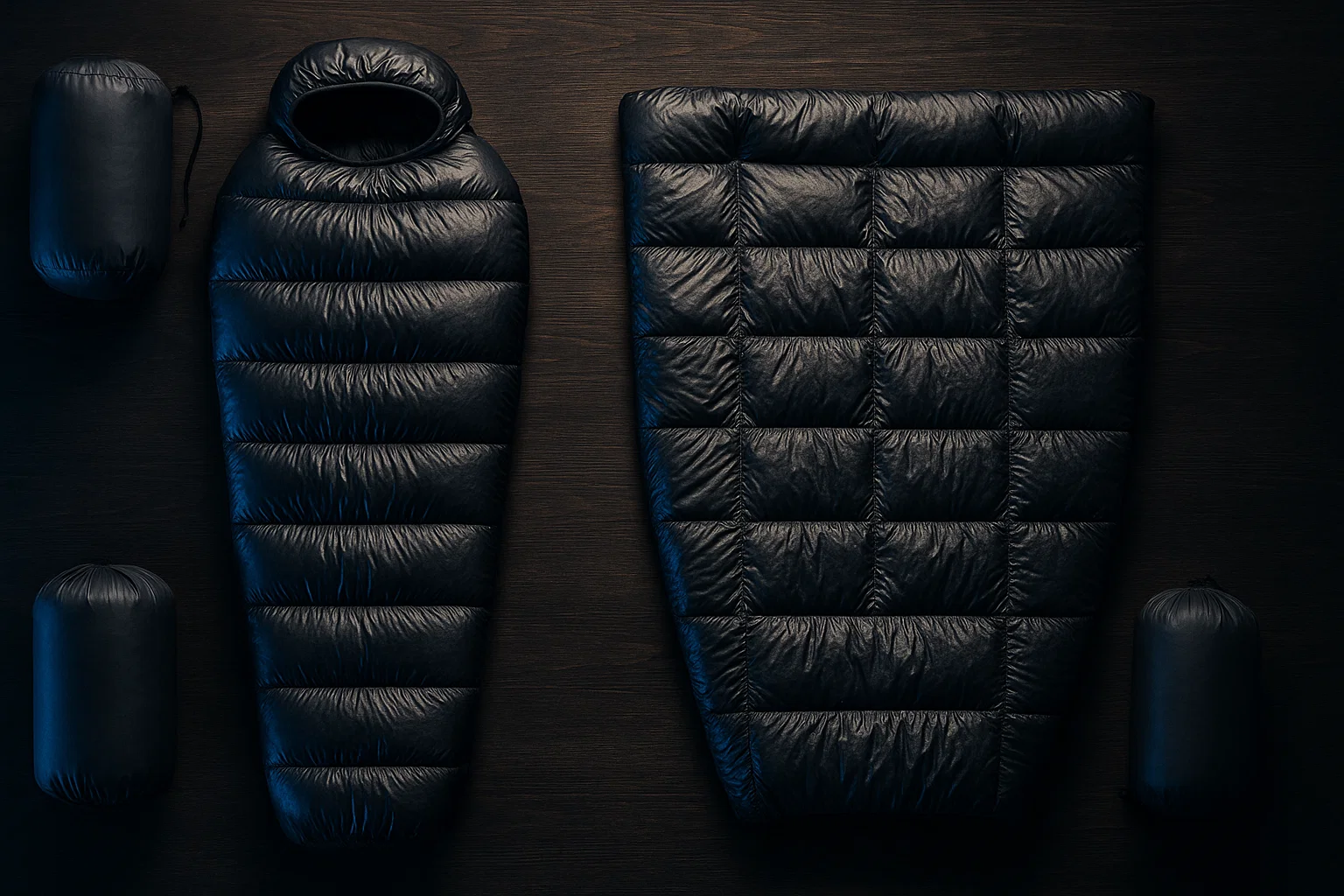
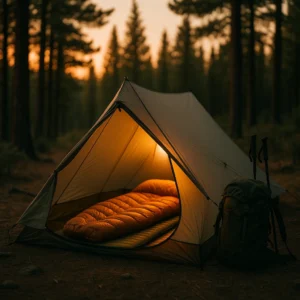
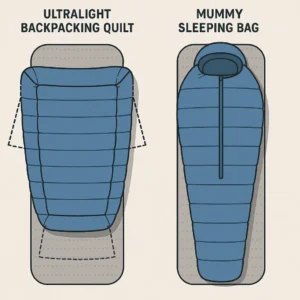
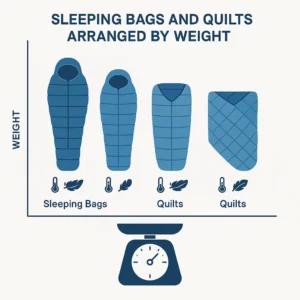
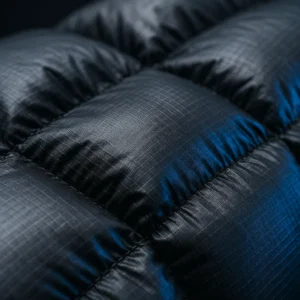
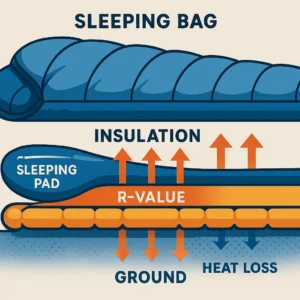
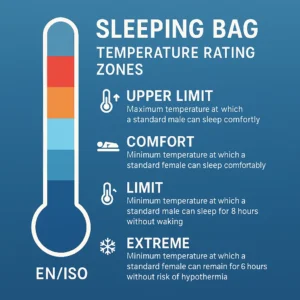
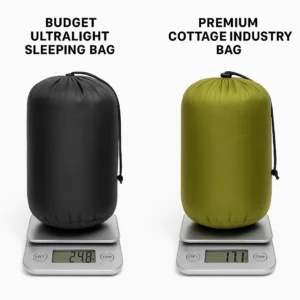
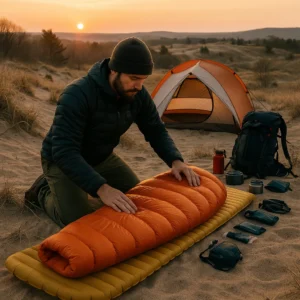
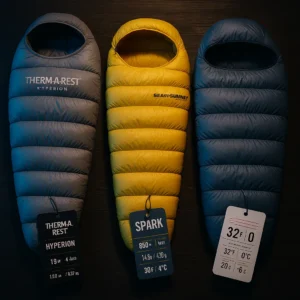

Leave a Reply